Related Research Articles
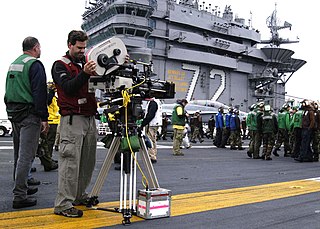
The cinematographer or director of photography is the person responsible for the recording of a film, television production, music video or other live-action piece. The cinematographer is the chief of the camera and light crews working on such projects. They would normally be responsible for making artistic and technical decisions related to the image and for selecting the camera, film stock, lenses, filters, etc. The study and practice of this field are referred to as cinematography.

Conrad Lafcadio Hall, ASC was a French Polynesian-born American cinematographer. Named after writers Joseph Conrad and Lafcadio Hearn, he became widely prominent as a cinematographer earning numerous accolades including three Academy Awards, three BAFTA Awards and five American Society of Cinematographers Awards.

Janusz Zygmunt Kamiński is a Polish cinematographer and director.
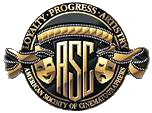
The American Society of Cinematographers (ASC), founded in Hollywood in 1919, is a cultural, educational, and professional organization that is neither a labor union nor a guild. The society was organized to advance the science and art of cinematography and gather a wide range of cinematographers to discuss techniques and ideas and to advocate for motion pictures as a type of art form. Currently, the president of the ASC is Shelly Johnson.

American Cinematographer is a magazine published monthly by the American Society of Cinematographers. It focuses on the art and craft of cinematography, covering domestic and foreign feature productions, television productions, short films, music videos and commercials.

Philip H. Lathrop, A.S.C. was an American cinematographer noted for his skills with wide screen technology and detailed approach to lighting and camera placement. He spent most of his life in movie studios. Lathrop was known for such films as Touch of Evil (1958), Lonely Are the Brave (1962), The Americanization of Emily (1964), The Cincinnati Kid (1965), Point Blank (1967), Finian's Rainbow (1968), The Traveling Executioner (1970), Portnoy's Complaint (1972), Earthquake (1974), Swashbuckler (1976), The Driver (1978), Moment by Moment (1978), A Change of Seasons (1980), Foolin' Around (1980), Loving Couples (1980), and Deadly Friend (1986).
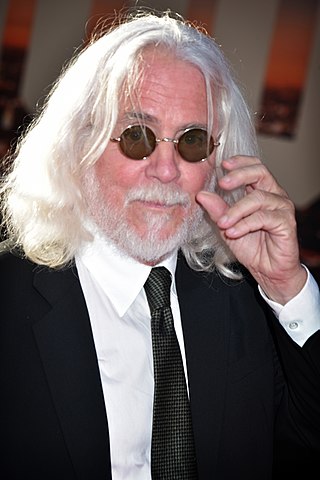
Robert Bridge Richardson, ASC is an American cinematographer. Known for his trademark aggressively bright highlight as well as shapeshifting style, he is one of three living persons who has won the Academy Award for Best Cinematography three times, the others being Vittorio Storaro and Emmanuel Lubezki. He has frequently collaborated with Oliver Stone, Quentin Tarantino, and Martin Scorsese.
Joseph Francis Biroc, ASC was an American cinematographer. He was born in New York City and began working in films at the Paragon Studios in Fort Lee, New Jersey. After working there for approximately six years, he moved to Los Angeles. Once in Southern California, Biroc worked at the RKO Pictures movie studio. During World War II, he served in the U.S. Army Signal Corps and filmed the Liberation of Paris in August 1944. In 1950, Biroc left RKO Pictures and freelanced on projects at various studios. In addition to his film work, which included It's a Wonderful Life (1946) and The Flight of the Phoenix (1965), Biroc worked on various television series, including the Adventures of Superman and Wonder Woman. He frequently collaborated with film director Robert Aldrich.
Dante Spinotti, ASC, AIC is an Italian cinematographer. He is known for his collaborations with directors such as Michael Mann, Michael Apted, Ermanno Olmi, Bruce Beresford, Curtis Hanson, and Brett Ratner. He received Academy Award nominations for L.A. Confidential (1997) and The Insider (1999), and won a BAFTA Award for The Last of the Mohicans (1992). He has also won two Italian David di Donatello Awards and two Nastro d'Argento Awards.

Michael Ballhaus, A.S.C. was a German cinematographer. He is known for his work with directors including Rainer Werner Fassbinder, Martin Scorsese, Mike Nichols, James L. Brooks, and Wolfgang Petersen. He was a member of both the Academy of Arts, Berlin, and the American Society of Cinematographers.
Tony Pierce-Roberts is a British cinematographer most known for his work on the Merchant-Ivory film productions, A Room with a View (1986), Mr. & Mrs. Bridge (1990), Howards End (1992), and The Remains of the Day (1993).

John Ira BaileyASC was an American cinematographer and film director known for his collaborations with directors Paul Schrader, Lawrence Kasdan, Michael Apted, and Ken Kwapis. In August 2017, Bailey was elected president of the Academy of Motion Picture Arts and Sciences. He was succeeded by casting director David Rubin in August 2019.
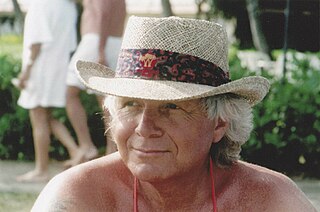
Thomas Del Ruth is a retired American cinematographer.
David Gribble is an Australian cinematographer and director of photography based in New South Wales. He has also worked in the United States, filming TV movies and other works.
Thomas Richmond was an American cinematographer who worked in the film industry since the mid-1980s. His first major feature film as cinematographer was Stand and Deliver (1988), and by the time he shot for A Midnight Clear (1992), he had settled into working with different directors with ease. Richmond described his experience, "All my films look different because they're not my visions; they're my reflections of the directors' visions." In 1998, he said he was most proud of his work on Little Odessa (1994), for which he was nominated an Independent Spirit Award for Best Cinematography. For Right at Your Door (2006), he won the Excellence in Cinematography Award (Dramatic) at the 2006 Sundance Film Festival.
Frank E. Johnson A.S.C. is an American cinematographer, producer and film director. He is best known for cinematography on The A-Team, but has also worked the camera for such feature films such as Predator (1987), The Taking of Beverly Hills (1991), and The Man in the Black Suit (2004). He was twice nominated for an ASC Award for "Outstanding Achievement in Cinematography", in 2000 and 2001. He has a film set for release in 2009 as producer and director for Shannon's Rainbow.

Don Michael Burgess, is an American cinematographer, best known for his collaborations with director Robert Zemeckis. He was nominated for the Academy Award and BAFTA Award for Best Cinematography for Zemeckis' Forrest Gump (1994). In 2024, he received the American Society of Cinematographers' Lifetime Achievement Award.
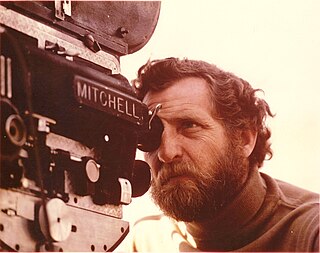
Kent Lon Wakeford was an American cinematographer, the co-founder of Wakeford / Orloff Productions, and founder of Kent Wakeford and Associates, two commercial production companies.
Jonathan Freeman, ASC is a Canadian cinematographer. A multi-award-winning director of photography for motion pictures, television and commercials, he is known for his work on Game of Thrones and Boardwalk Empire. Freeman's motion picture credits include Remember Me, Fifty Dead Men Walking, The Edge of Love, Hollywoodland and The Prize Winner of Defiance, Ohio. He frequently collaborates with directors Allen Coulter, Ernest Dickerson, David Nutter, and Russell Mulcahy.
References
- ↑ Who’s Who in Entertainment. Second edition, 1992–1993
- ↑ "U.S. Public Records Index" . Retrieved 2011-04-05.